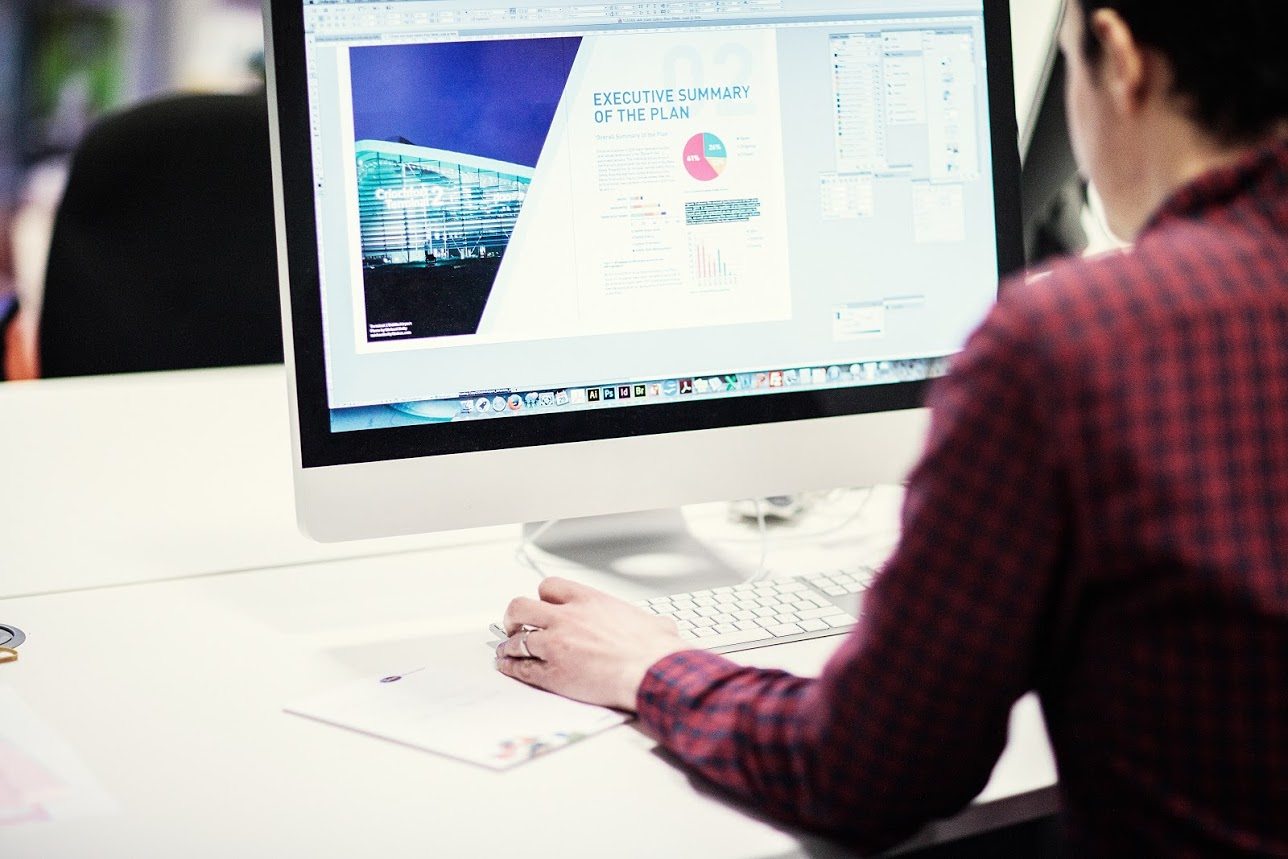Almost everyday, our designers ask our clients for their logo, or an image, and typically, we receive a .jpg image file which is often a low-resolution copy.
When we inform the client that this won’t work for insertion in a brochure and that we need an editable format, we discover that many don’t know how this works. Sometimes we get comments like “can’t you get it from my website?”, however this won’t give the best outcome. So I think it might be helpful if I explained the key issues around usage of graphical elements in marketing materials.
Layers vs. Flat
Logo and other graphics are created in software that provides the ability to layer elements on top of each other. If you want to have your graphic designer change the background colour, or remove it completely, then the file must be provided in a format that allows the original layers to be accessed. For example, your logo is shown on a white background, but you want to put it on a page with a blue background. If sent as a flat jpg file, the white background cannot be extracted from the logo image and so would have to be placed on the blue as-is. This would not look great because it would be a white box with your logo on it placed onto the blue background – and that isn’t what you want.
In order to allow the required editing you need to provide your designer with a .eps, .psd or .ai format file. There are other formats, but these are the most common for layered files.
Vector vs. Bitmap
This is a much bigger problem when trying to implement logos on large banners etc. A .jpg file uses a “bitmap” format. This means that the required number of pixels have been stored in a specific position and size relative to the size of the logo. If you try to make the logo bigger the image simply becomes “mushy”.
This is because you are increasing the size of each pixel that is in the original image.
A “Vector” file is a format that redraws the logo/image every time it is increased/reduced in size. This means that if you increase the size of the logo to the height of your building, the software will insert millions of additional pixels in order to maintain the sharpness of all elements. However, this only applies to designed elements like logos and illustrations.
Photography is always in bitmap format, which means that you are restricted as to how much you can increase the size of the image. But that leads me onto the next subject.
DPI (Dots Per Inch)
As its name implies, DPI literally means how many pixels there are in every square inch. The more pixels there are to represent what you see in that square inch of image, the better the resolution and quality of the image. It also means that higher DPI values provide more scope for image enlargement in a bitmap file because the pixels start off smaller and so each one is enlarged proportionally less.
So, let’s say that you send your designer a .jpg version of your logo for use on a large banner and we don’t need to change the background colours. If the DPI of the logo is 300, we might even get away with using the .jpg file.
However, the higher the DPI value, the bigger the file and so for web use the DPI values are normally reduced to as low as possible in order to optimise the file size of the image. This means that typically you will see values as low as 72DPI on a web version of a logo. Utterly useless for print, where we would require DPI values of 300 or more. This is why you can’t ask your designer to “get my logo from my website”. This also means that photographs on your website cannot be used in your brochure. The quality of the images are simply too low and would end up looking like the logo examples.
RGB vs. CMYK
Monitors use 3 colours (Red, Green and Blue), mixed in different proportions to represent a broad spectrum of colours. Printers on the other hand use 4 colours (Cyan, Magenta, Yellow & Black) to achieve the same thing.
If you send your designer a .jpg file that has been saved for use on screens and is therefore in RGB format, they should call you and tell you that they can’t use it (some print companies will not accept RGB files in their printers), or at the very least that your colours will not be accurate.
You see the printer will basically transpose the RGB values to the nearest equivalent CMYK values and in some cases this can cause quite visible variations in colour reproduction.
So now you know, dealing with logos and imagery, especially in print, is much more complex than simply grabbing images off a website.

